|
||||||||||||||||||||||||||||||||||||||||||
|
||||||||||||||||||||||||||||||||||||||||||
|
||||||||||||||||||||||||||||||||||||||||||
|
Home Rapa Nui Journal Picture Archive Polynesian Language References
|
||||||||||||||||||||||||||||||||||||||||||
![]()
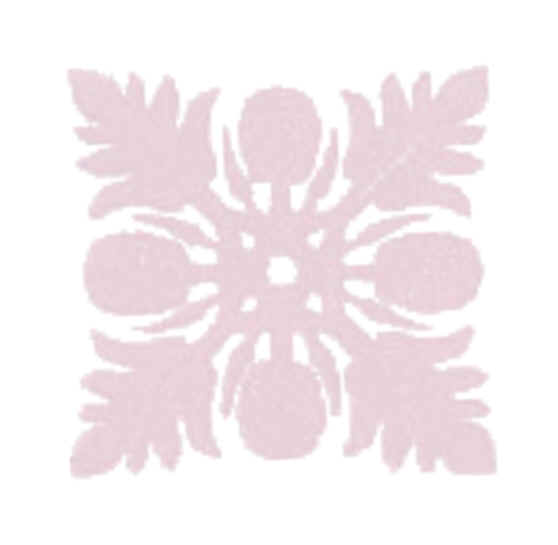
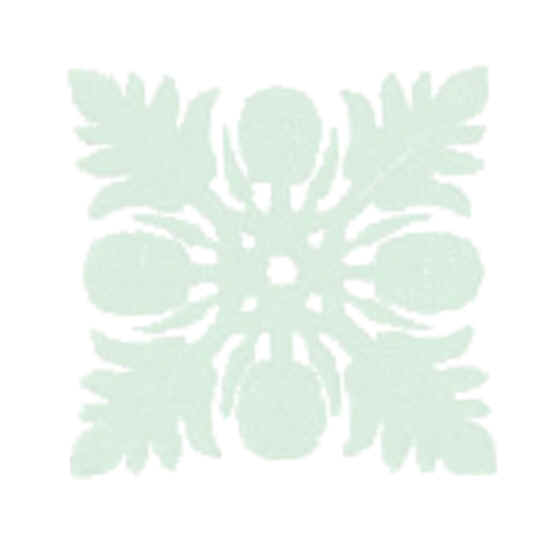
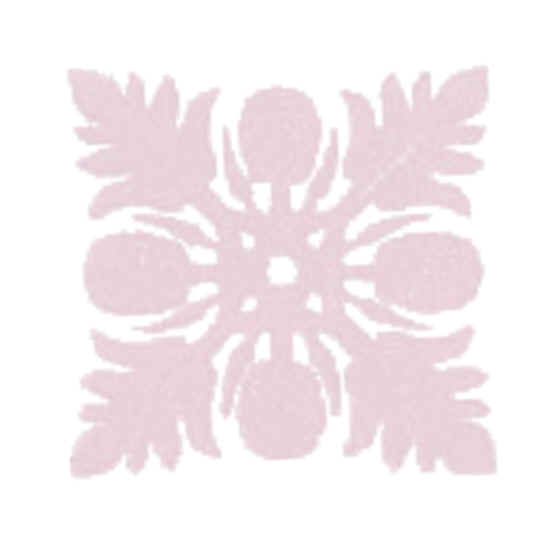
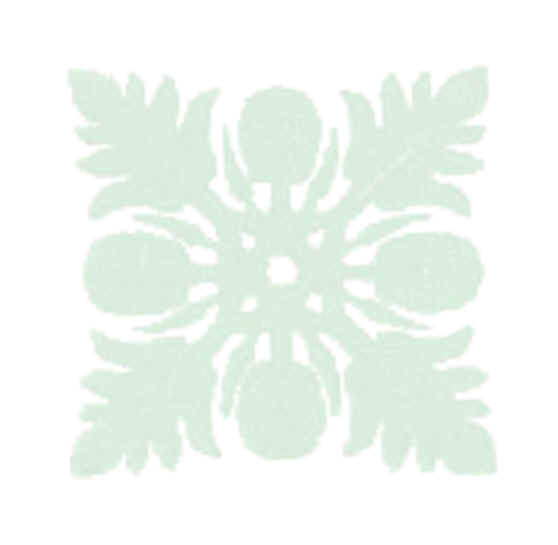
![]()
![]()
![]()
![]()


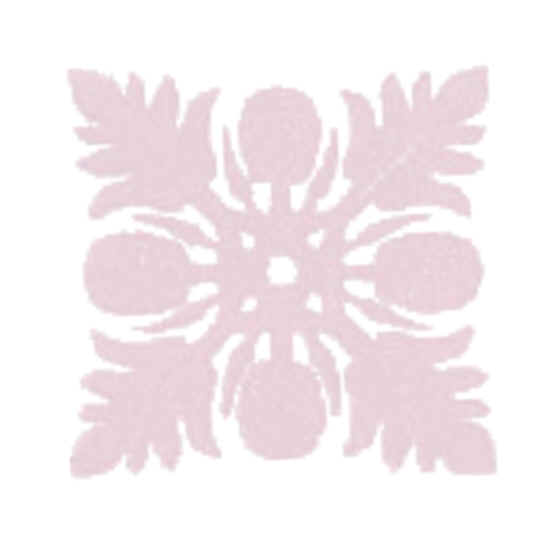

|
||||||||||||||||||||||||||||||||||||||||||
|
||||||||||||||||||||||||||||||||||||||||||
|
||||||||||||||||||||||||||||||||||||||||||
|
Home Rapa Nui Journal Picture Archive Polynesian Language References
|
||||||||||||||||||||||||||||||||||||||||||
![]()




![]()
![]()
![]()
![]()




click here to see a map of Rapa Nui
ahu - altar, ceremonial platform.
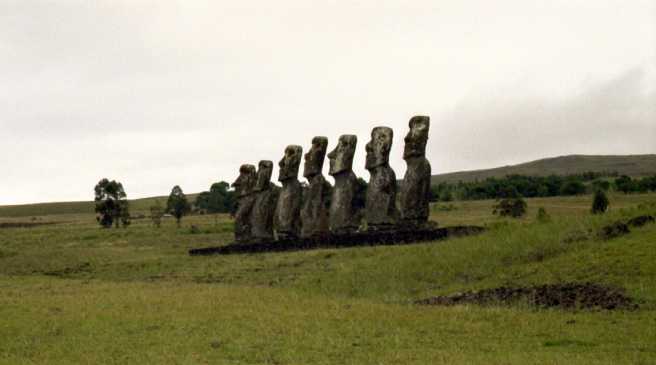
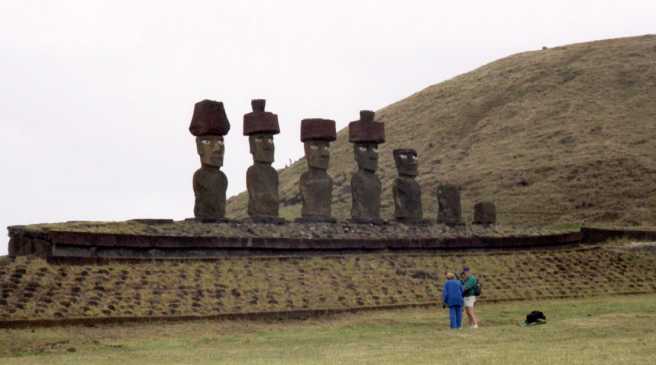
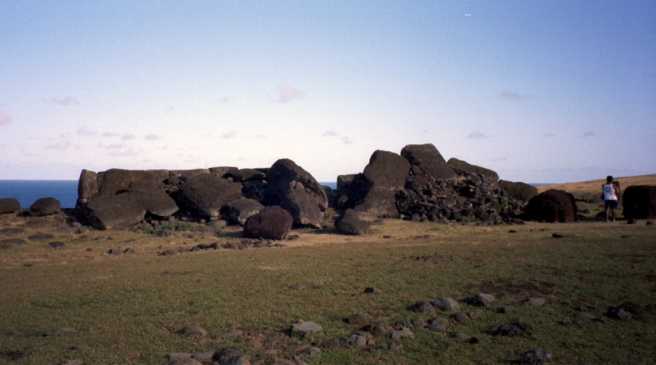
ana - cave
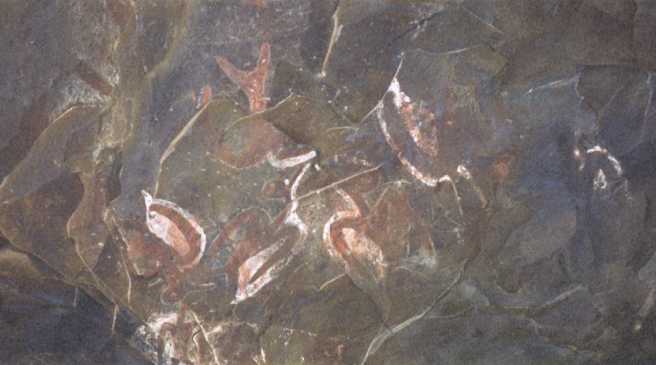
click here to see a map of Rapa Nui

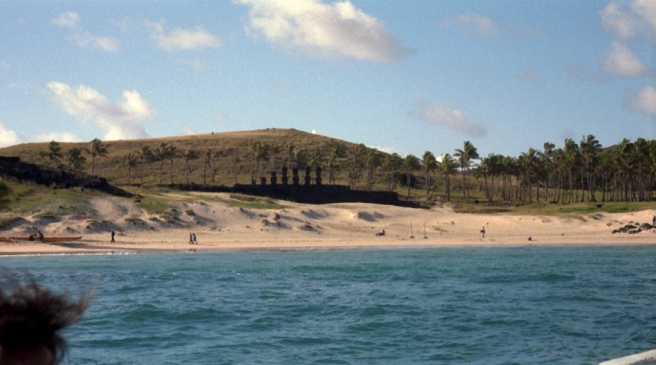 Anakena
- one of only two white sand beaches on the island, located on
the northern coast of the island. This is where Hotu Matua, Rapa Nui's
first King, is said to have landed.
Anakena
- one of only two white sand beaches on the island, located on
the northern coast of the island. This is where Hotu Matua, Rapa Nui's
first King, is said to have landed.
haka - to do, usually used as a prefix to a verb.
Haka Pei - one competition in the Tapati festival where two banana tree stumps are tied together and used as a sled. The competitor lies, back down with feet facing downhill, on the sled and slide down a hill. The competitors are judged by speed and by their ability to stay on the sled throughout the duration of the slide.
hanga - bay
Hanga Roa - name of the island's only town, where nearly all the locals live.
hare - house
hare mauku - grass house
click here to see a map of Rapa Nui
hiku - tail
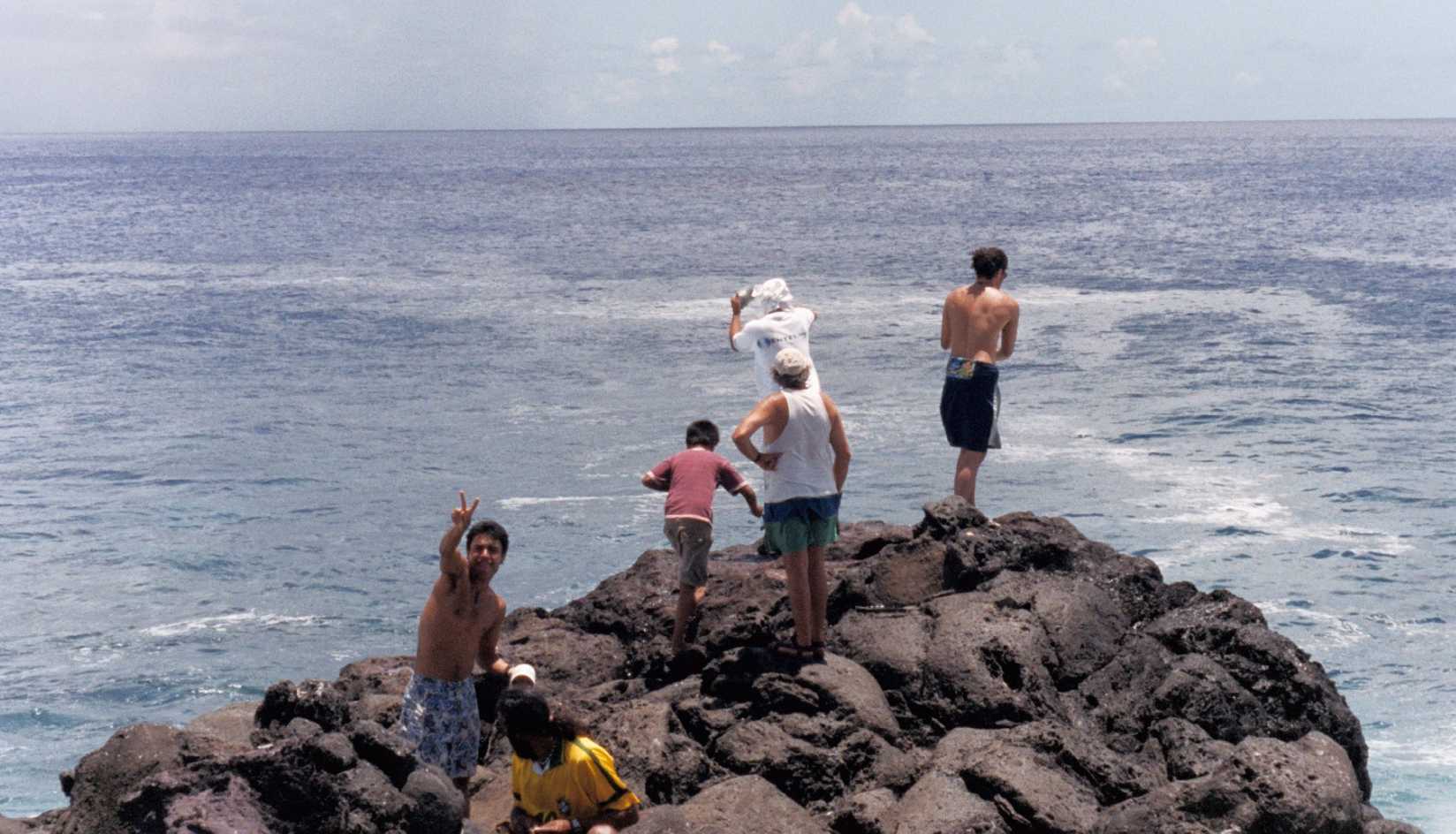 Hiku
Te Ika - tail of the fish. one of our favorite
fishing spots.
Hiku
Te Ika - tail of the fish. one of our favorite
fishing spots.
Hotu Matua - the first King of Rapa Nui, who first arrived and disembarked with his wife, Avareipua, at Anakena beach. There are a few theories on where he came from, but unfortunately I don't know enough to try and list them here.
ika - fish
iorana - greeting, used like hello and goodbye.
"Iorana tatou" - hello/goodbye everyone.
kai - to eat
karikari - cliffs. also the name of a well-known dance troupe on the island.
Makemake - a Rapa Nui God that served as a protector for the people.
Manutara - name of a sea bird that nests on Motu Nui. During the Bird Man competition in ancient times, a competitor needed to swim to Motu Nui after diving off the cliff at Orongo. Once on the island, he had to find an egg of the Manutara bird, then swim back, climb up the cliff, and present it to his king, intact. The first person to achieve this feat won the competition, and whoever he represented would be king for a year. Although the Bird Man competition no longer occurs, the Manutara symbol is still seen prominently on the island today.
matato‘a - warrior, tribal chief; brave, strong, valiant. also the name of Rapa Nui's most popular rock band.
mauku - grass
click here to see a map of Rapa Nui
maunga - mountain/hill
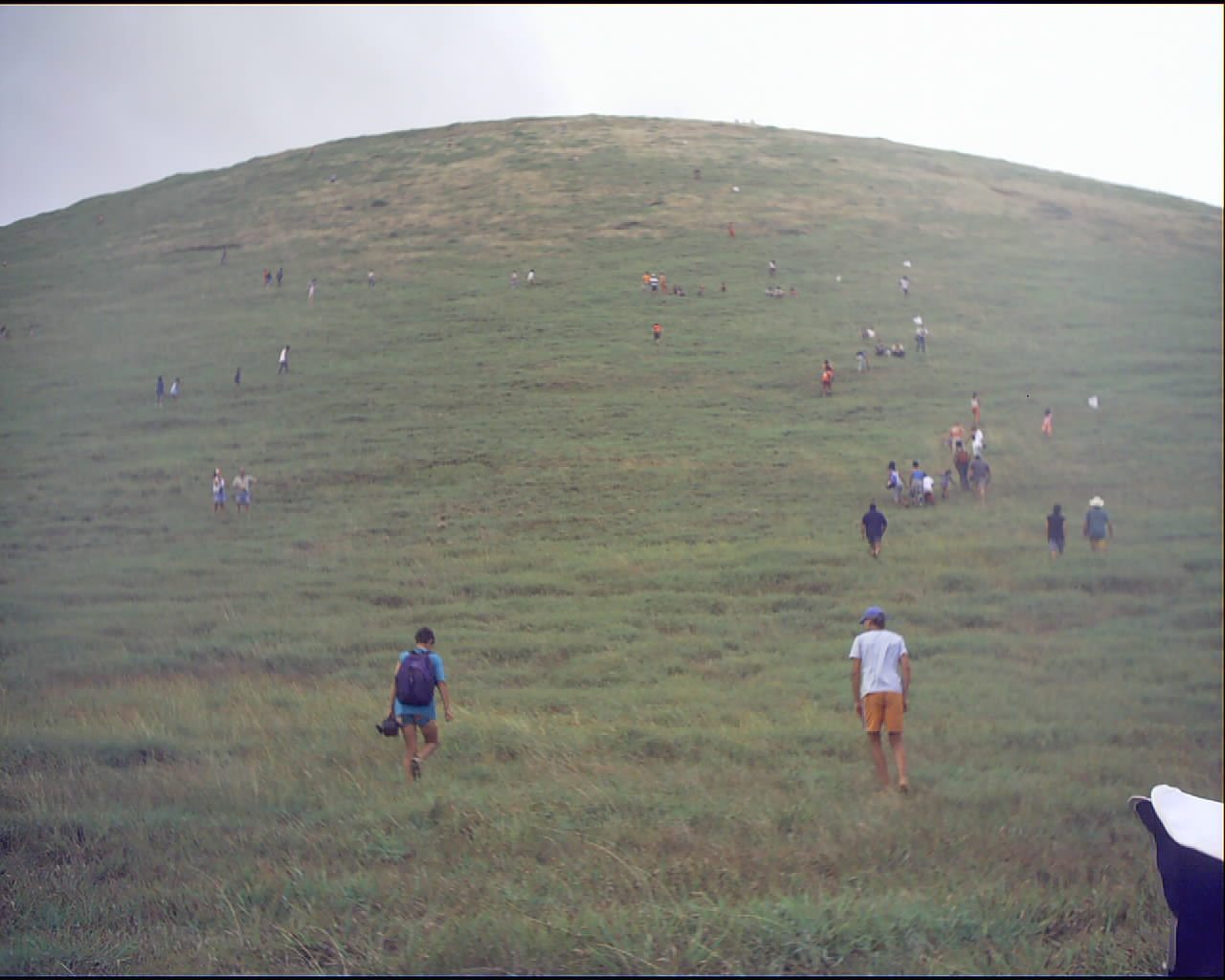 Maunga
Pui
- hill on the island where the Haka Pei competition is held.
Maunga
Pui
- hill on the island where the Haka Pei competition is held.
moai - stone statues thought to be created as representations of familial Gods.
moana - ocean or blue
motu - island
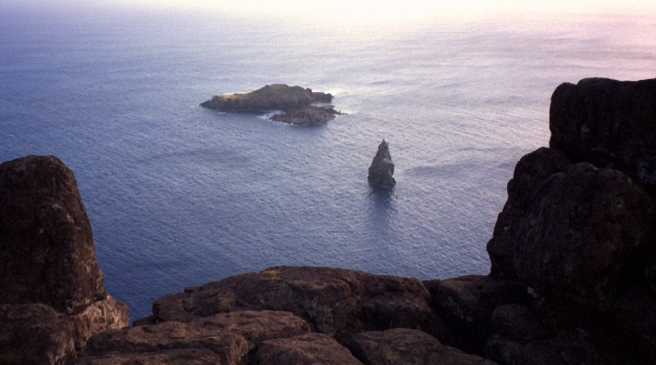
Motu Iti - in this picture, the second island, nearest to the biggest. (iti - small)
Motu Kaokao - the small, tall island that resembles a spike jutting out of the ocean. (kaokao - side)
Nanue Para - name of a fish, bright yellow in color, that one must be either very skilled or very lucky to catch.
click here to see a map of Rapa Nui
nene - sweet, delicious.
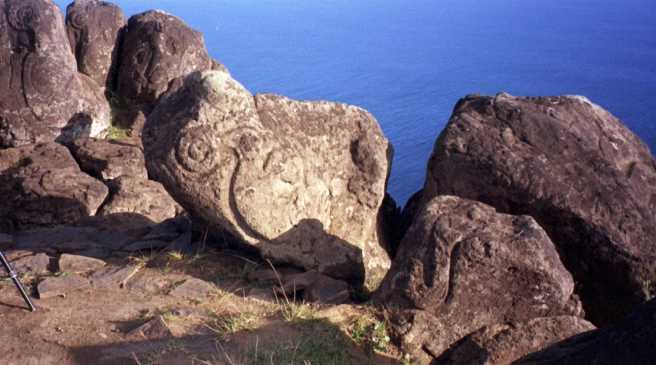
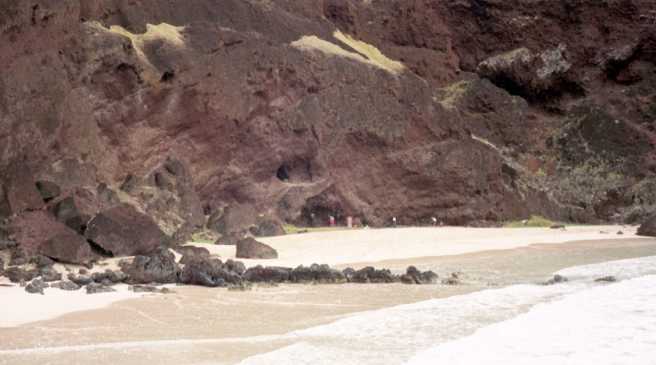
Piditi - a disco on the island located just a short way up from the airport. I'm not sure if it is open for operation or not...
pito - navel
Te Pito O Te Henua - The Navel Of The Earth. Said to be Rapa Nui's ancient name.
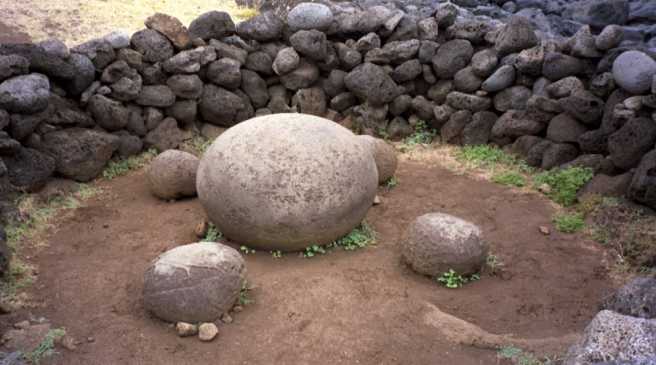
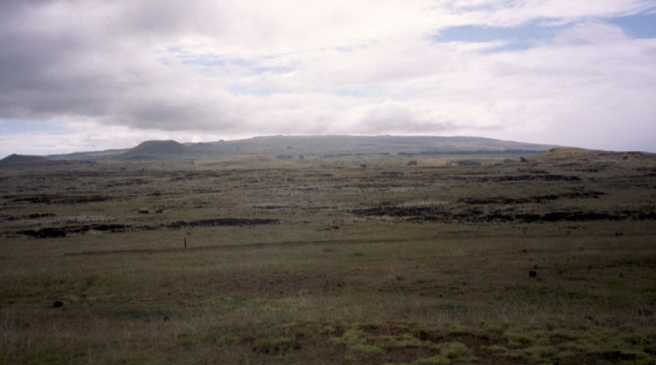
click here to see a map of Rapa Nui
rano - volcano, volcanic crater and it's lake.
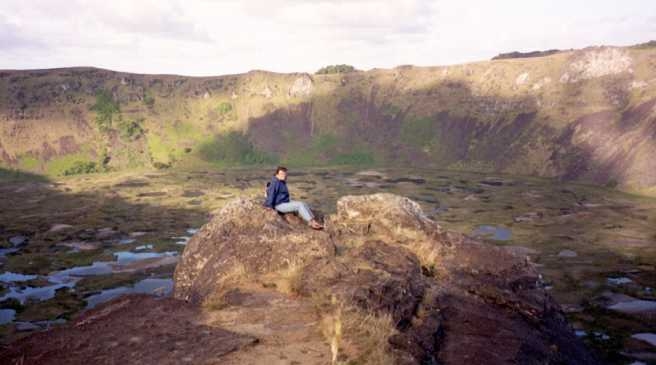
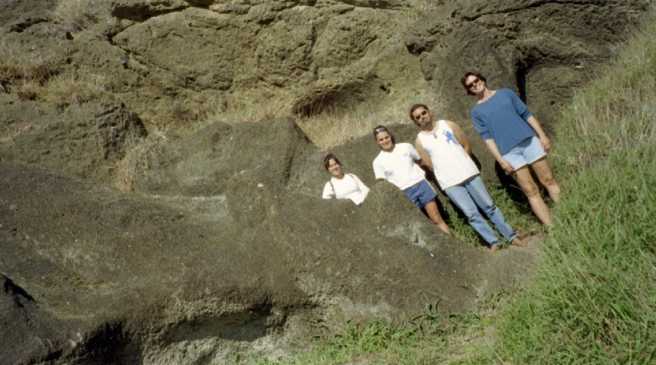
roa - long
Tahai -
tangata - man; to be human.
Tangata Manu - bird man. In ancient times there was a competition called the Birdman contest, in which each competitor raced to find the egg of a manutara bird, then bring it back, intact, to the finish line. Whomever the winner represented would reign as King for one year. There are a few theories as to why the bird became an important symbol and why a combination of man and bird became desirable...all I know is that feathers have been seen in traditional attire from that time on, and is still very apparent on the island today.
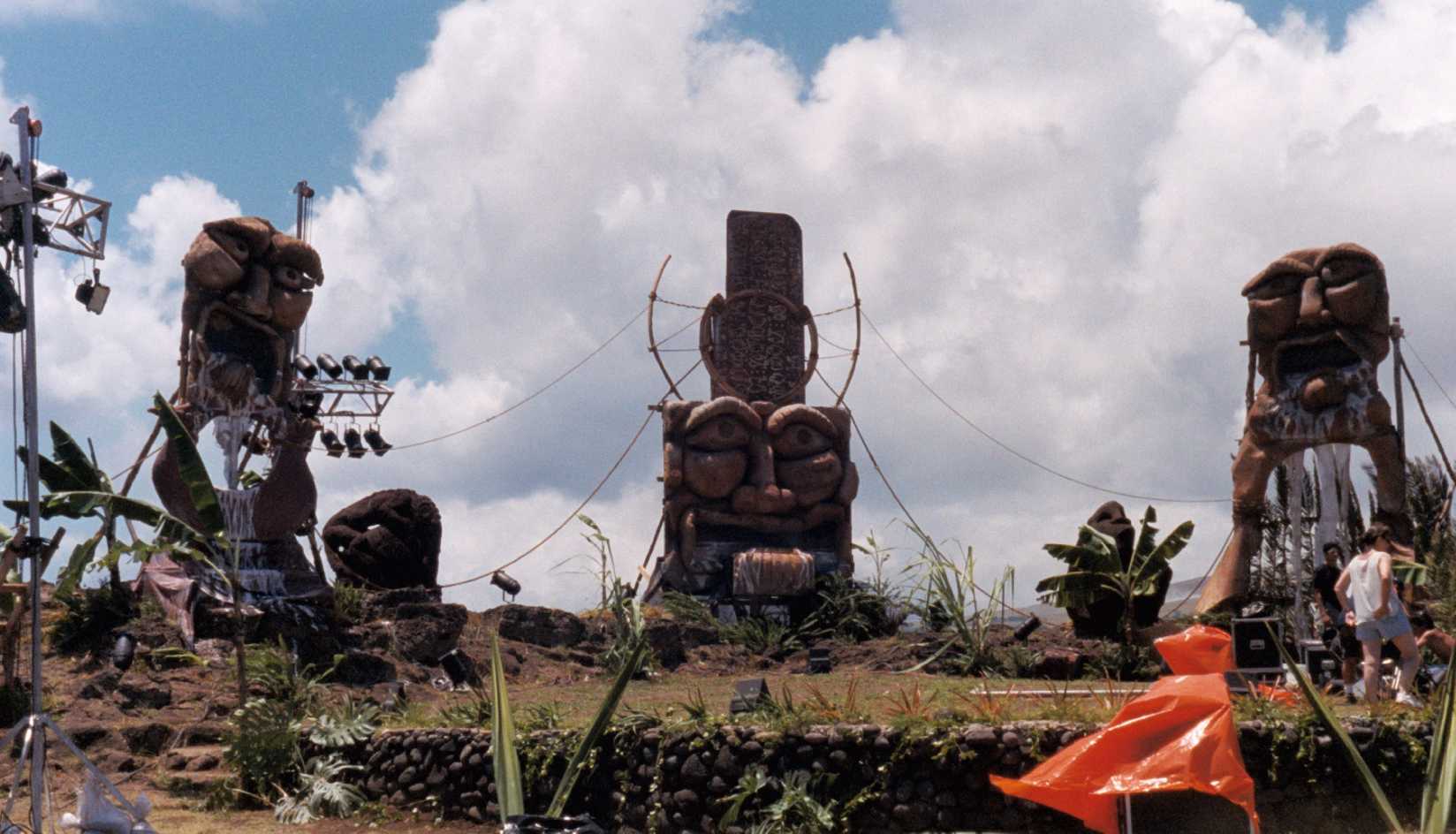
Tau‘a - war. Also the name of the marathon competition which takes place every year in Rano Raraku as a part of the Tapati festival. Competitors must create a kayak-like vessel and a paddleboard out of reeds to use in the race. The must first paddle across the lake in the kayak-like boat, then run around the perimeter of the lake carrying 2 banana bunches on their backs, then they must run another 1/4 of the distance free of burden. At the 1/4 way mark, they pick up the reed paddle boards and carry it to the lake entrance, another 1/4 of the way around the lake. Then they must paddle across the lake again to the finish line.
click here to see a map of Rapa Nui
te - the
tokerau - wind
Tongariki -
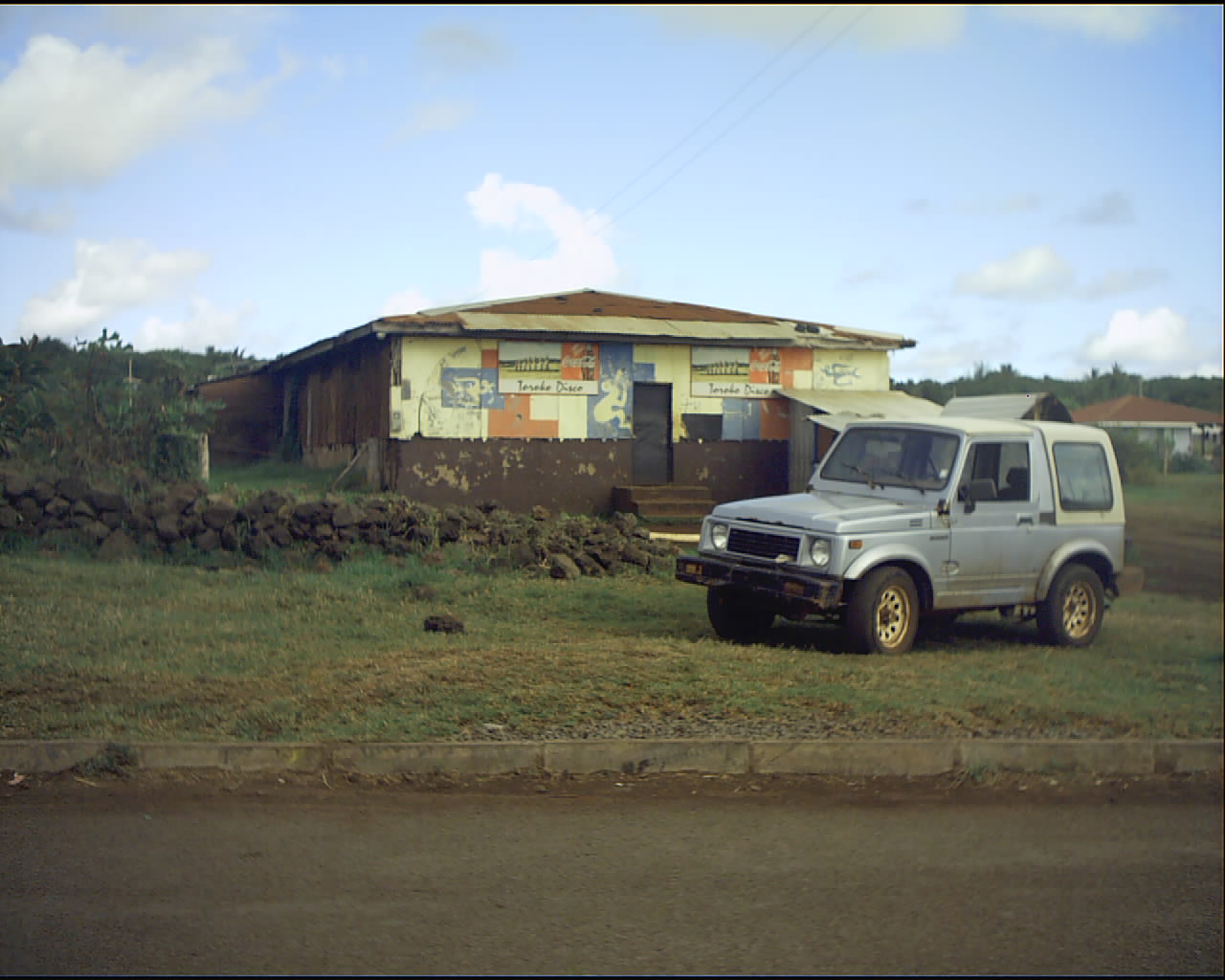 toroko
- the name of a certain plant (which I don't know). Also the name of the
islands most popular disco. It's a shack...but there's nothing else like
it!
toroko
- the name of a certain plant (which I don't know). Also the name of the
islands most popular disco. It's a shack...but there's nothing else like
it!
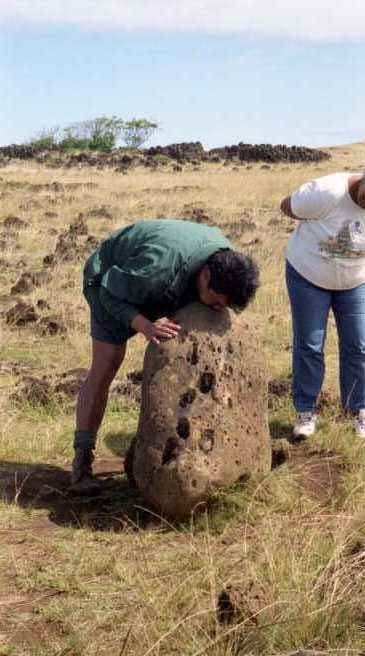
‘umu - underground oven
‘upa‘upa - accordion. Believe it or not, this instrument has been accepted into the culture of the island, and is used in it's music so much that there in an entire competition during the Tapati festival which features the playing of this instrument.
vai - water
The above map came out of a Rapa Nui guide for tourists. I apologize for the lack of quality... I also apologize for the size. I tried to make it smaller, but the words become unreadable when shrunken. I've included this map, however, because it gives a good idea of where everything is situated on the island.